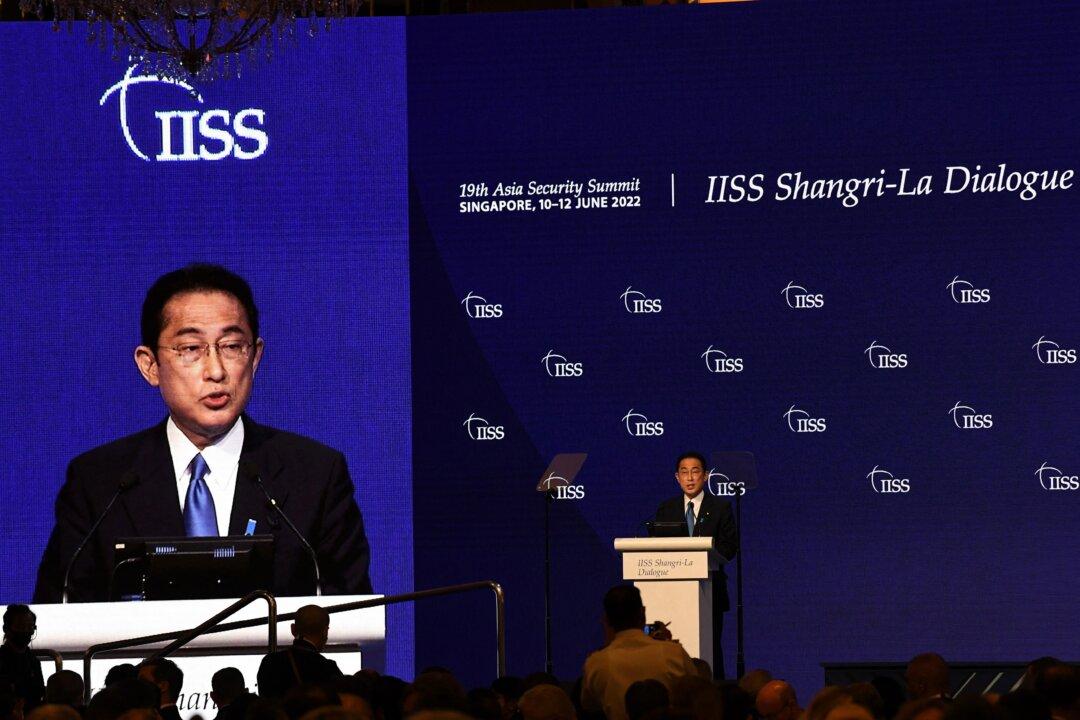Indicating a potential historic shift, Japanese Prime Minister Kishida Fumio said during the Shangri-La Dialogue in Singapore on June 10 that Japan will reinforce its defense capabilities and is exploring the possibility of possessing counterstrike capabilities.
This is to ensure that Japan plays a more responsible role in the region threatened by Chinese activities in the South and the East China Sea and by the insecurities arising after Russia’s invasion of Ukraine, according to experts.





